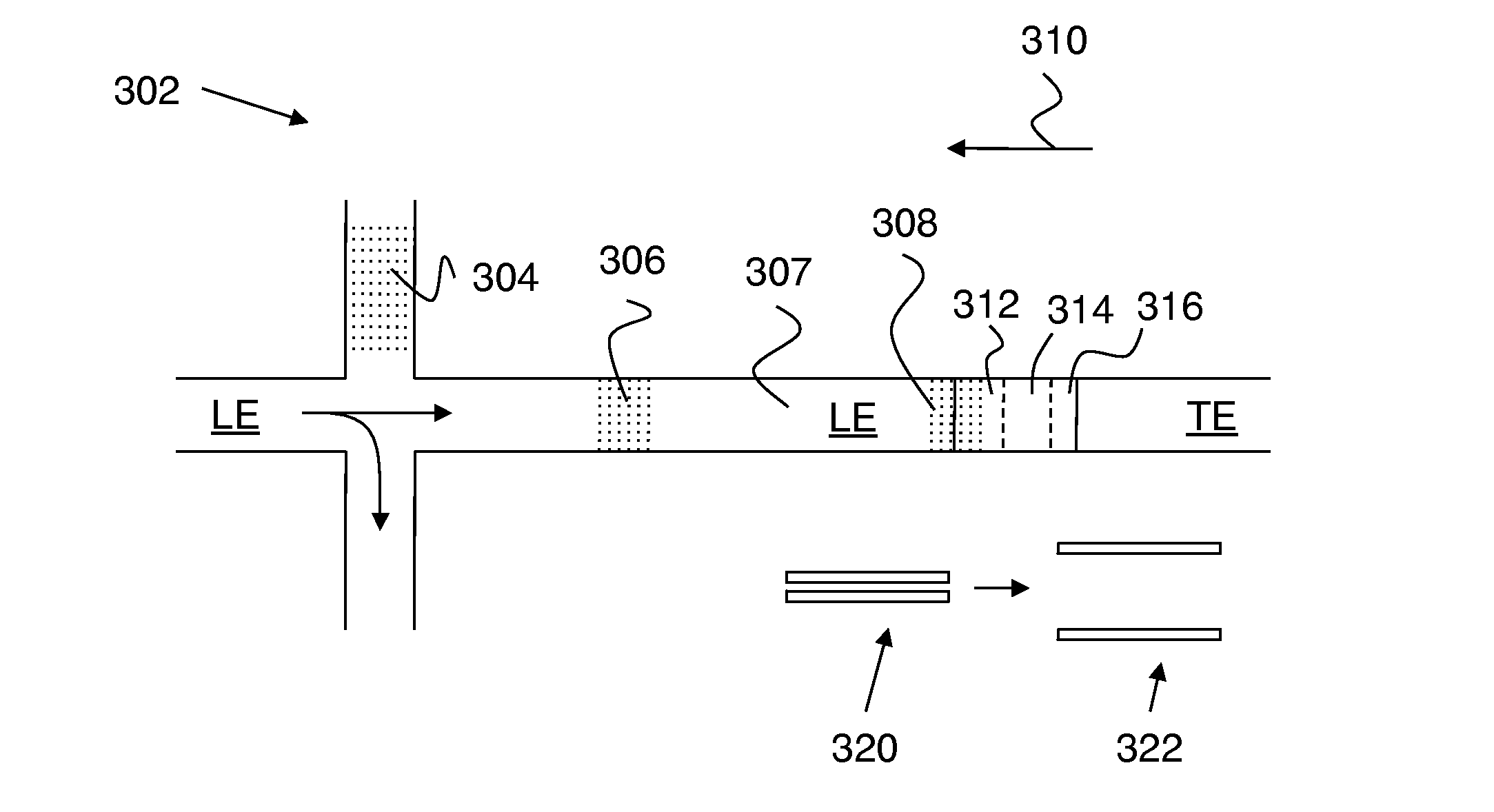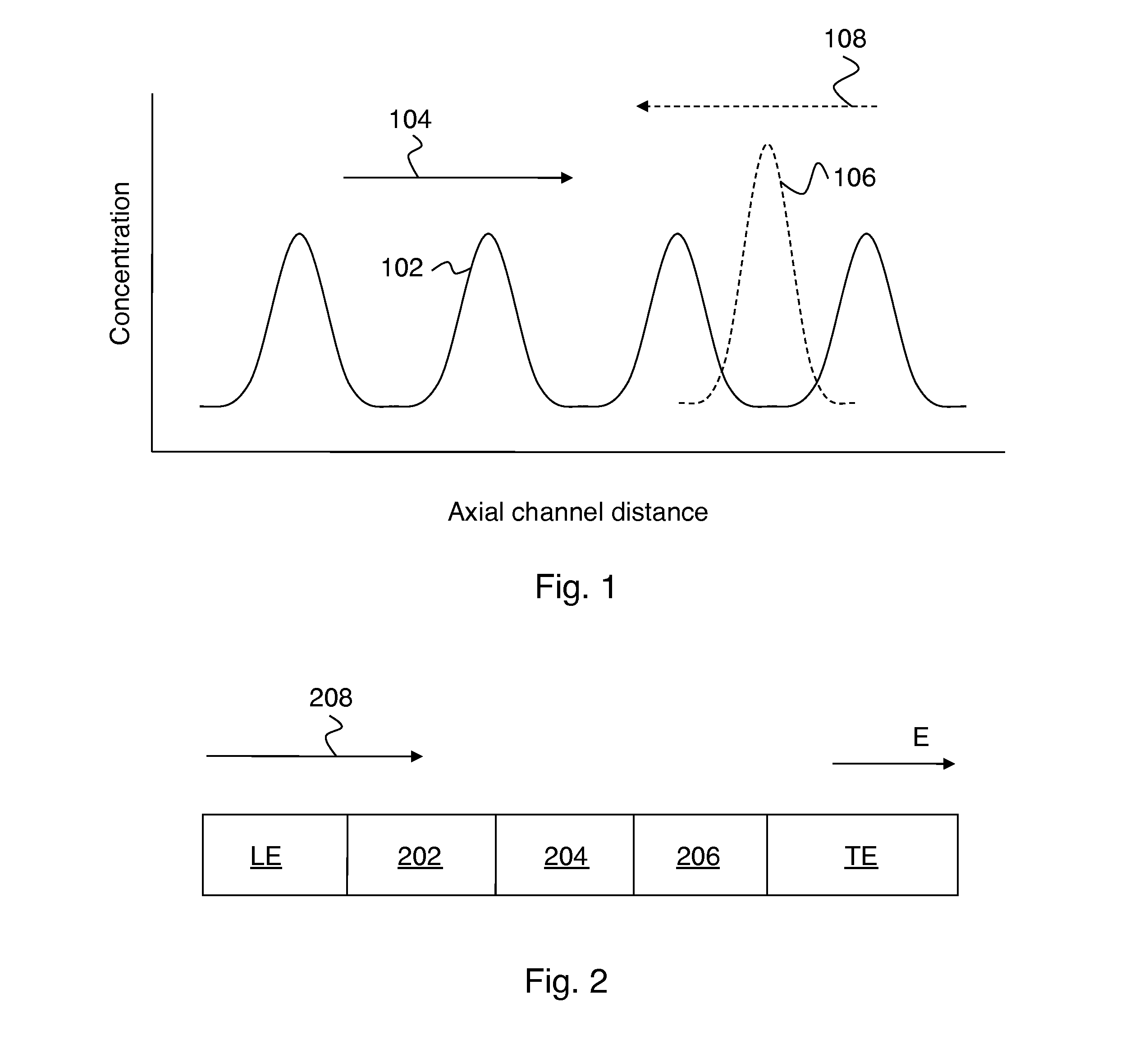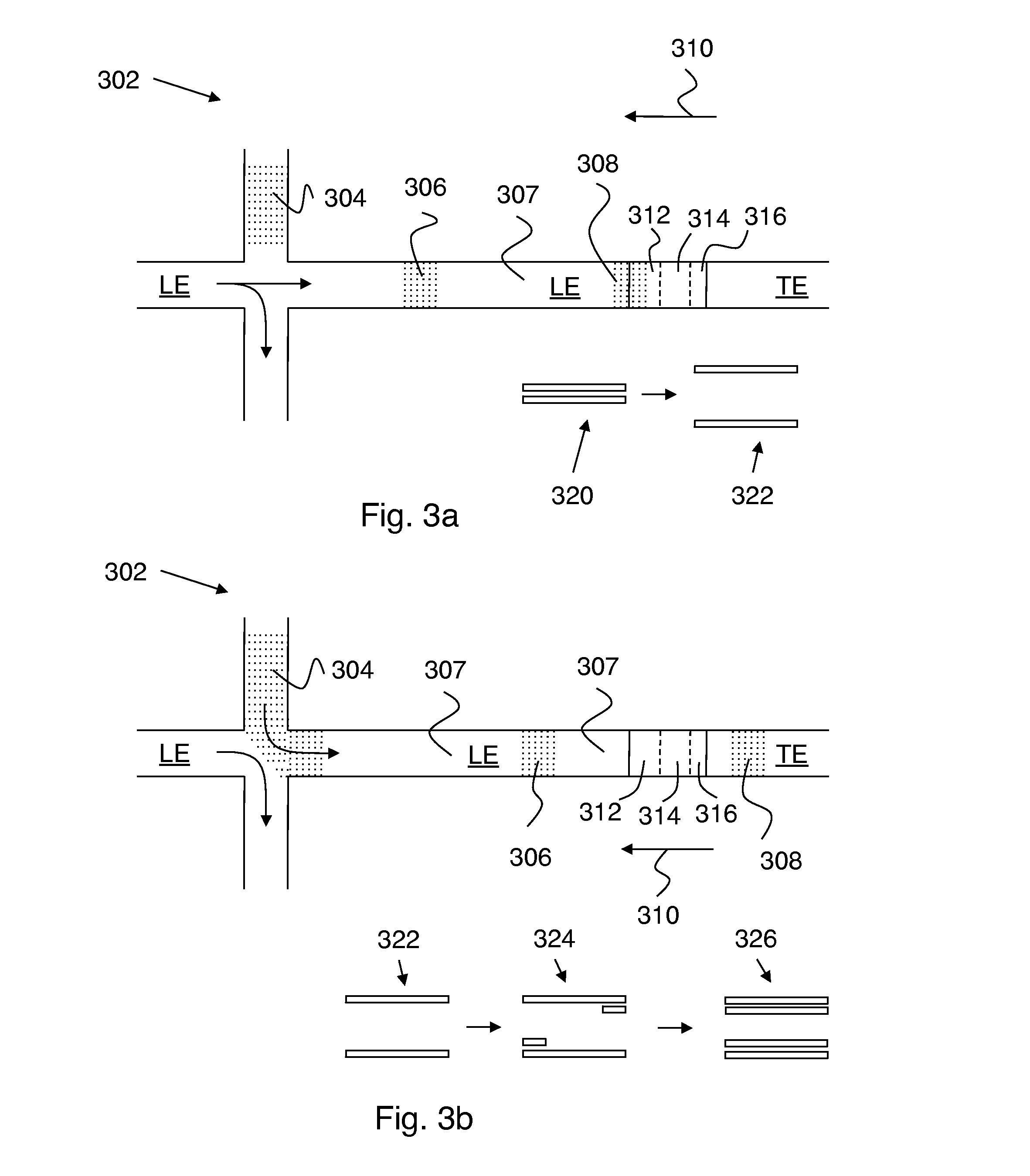Control of Chemical Reactions using Isotachophoresis
a technology of isotachophoresis and chemical reactions, applied in the direction of liquid/fluent solid measurement, fluid pressure measurement, peptide, etc., can solve the problems of high cost, thermal control, and expensive thermostable dna polymerase, and achieve the effect of enhancing the separation rate, simplifying the timing, and enhancing the separation of pcr reaction constituents
- Summary
- Abstract
- Description
- Claims
- Application Information
AI Technical Summary
Benefits of technology
Problems solved by technology
Method used
Image
Examples
experiment 1
ical Cycling Polymerase Chain Reaction Using Formamide and Urea as Denaturants
[0046]This assay was performed in a simple cross borosilicate glass microchip (model NS95, Caliper, Mountain View, Calif.) coated with polyvinylpyrrolidone. Off-chip PCR buffer and denaturant reservoirs were connected to a low dead volume switching valve (model C2, Vici Valco, Houston, Tex.). The valve was connected to the chip with nanoports (Upchurch Scientific, Oak Harbor, Wash.) and fused silica capillaries (Upchurch Scientific, Oak Harbor, Wash.). The pressure head between the off-chip reservoirs and the chip drives the flow. The chip was on an electric heater maintained at 55° C. with a Peltier device and a temperature controller (Omega Engineering, Stamford, Conn.). A sourcemeter (model 2410, Keithley, Cleveland, Ohio) was used to apply high voltage and perform ITP.
[0047]The reaction was monitored with an inverted epifluorescent microscope (Eclipse TE300, Nikon) equipped with a cooled CCD camera (Pr...
experiment 2
ITP Control Experiments
[0052]A series of calibration experiments were performed to optimize the chemistry and flow conditions. The efficacy of Taq Polymerase was demonstrated for a relatively low extension temperature of 55° C. Final concentrations of three-step classical PCR products of a 200 by template from E. Coli by agarose gel electrophoresis were compared. The PCR trials show very similar yields for extension temperatures of 55° C. and 72° C. demonstrating high Taq activity at 55° C. for the tested template (data not shown). This result shows that annealing and extension are possible at 55° C.
[0053]In a second set of experiments, it was verified that the ITP conditions can result in a buffer compatible with PCR. Buffer type, buffer concentration, and DNA concentration can have a strong effect on PCR efficiency. Ionic concentration was varied by changing the PCR buffer concentration of a three-step classical PCR from 1× to 6× (1× PCR buffer corresponds to 50 mM KCl, 20 mM Tris...
PUM
| Property | Measurement | Unit |
|---|---|---|
| temperature | aaaaa | aaaaa |
| temperature | aaaaa | aaaaa |
| temperatures | aaaaa | aaaaa |
Abstract
Description
Claims
Application Information
 Login to View More
Login to View More - R&D
- Intellectual Property
- Life Sciences
- Materials
- Tech Scout
- Unparalleled Data Quality
- Higher Quality Content
- 60% Fewer Hallucinations
Browse by: Latest US Patents, China's latest patents, Technical Efficacy Thesaurus, Application Domain, Technology Topic, Popular Technical Reports.
© 2025 PatSnap. All rights reserved.Legal|Privacy policy|Modern Slavery Act Transparency Statement|Sitemap|About US| Contact US: help@patsnap.com



